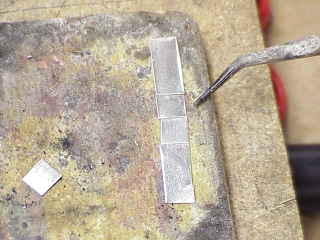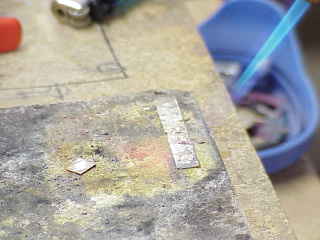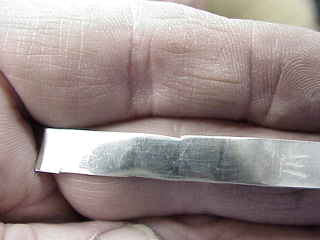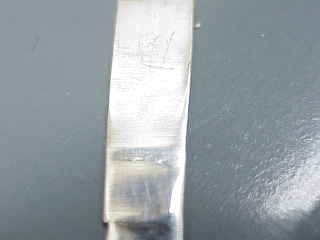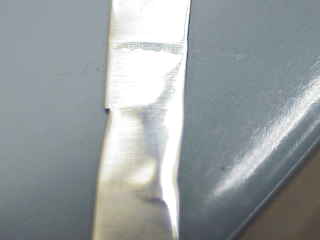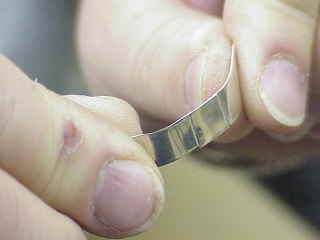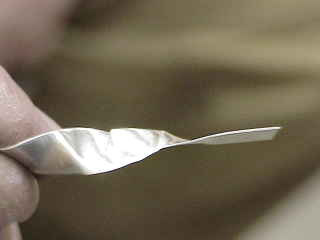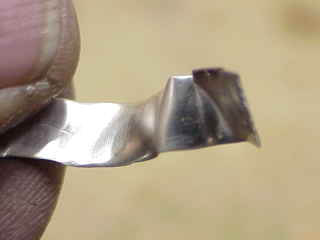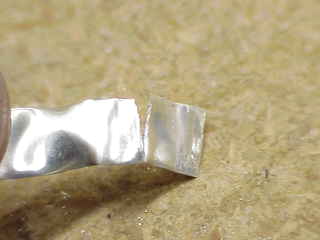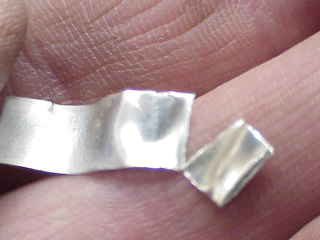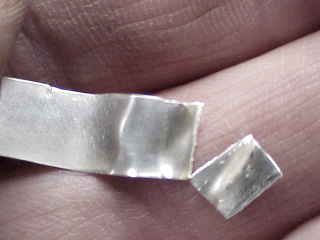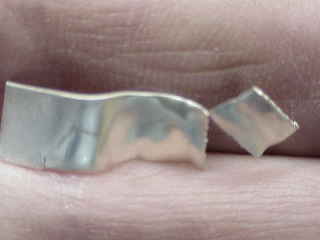1. Hard solder actually becomes easier and quicker to use than the "step" method. No hat trick, just controlling your torch, all my students can do that easily with in the first 30 minutes of learning to light a torch. This includes junior high age students. By using only hard solder there is no reason to ever have to "tie" your pieces together with "bailing wire", oops, I mean "binding wire". I have not used it in 25 years, and can not imagine a sitution that would require it. Hard solder will hold every thing in place while soldering. Saves time, more profit. In the same time it takes to try to tie something in place you can have it soldered.
2. Because hard solder polishes and ages just like sterling silver, you can use a lot of it to fill gaps, so there is no need to waste time getting every solder joint to fit just perfect. This insures that the customer gets a quality piece that takes less time to make, so more profit!
3. Hard solder polishes just like sterling, wears just like sterling, and tarnishes just like sterling, unlike easy and medium that begin to oxidize, tarnish faster than sterling. If you like unsightly darkened solder lines then use easy and medium.
4. Hard solder will not undercut as easy and medium solder will. I have had many repair jobs come in (when I did repairs for about 5 years) with solder lines on polished surfaces that were polish in to unsightly grooves. They tarnished, began to show, so they were polished and repolished to the point that the solder joints began to undercut, the solder eaten away. Then the sides of the sterling begin to get buffed and the result is a rounded groove where the joint is.
5. There are only three solder grades, some time in every piece you make, multi joints must be made with the same solder. All I am trying to teach is the more joints you make with hard solder the easier it is to do the piece. As soon as you begin to use medium or easy, you make it harder do make the next solder joint with out something bad happening. Doesn't this just make sense. If you use hard solder for nearly or all solder joints, it is actually easier to control the temperature of the piece and not harder.
6. The real proof that using only hard solder is easier to use, all my students use the $10.00 propane torch to learn with. Then as they sell jewelry and make a good profit, they can pay for a better torch.
7. Hard solder does not pit as medium and easy do. See the photos below.
8. Faster to use, which means to most fabricators, more profit! I teach my students they do not have time to dork around using three solders. In the time it takes to decide which one to use where, they can have it soldered and finished.
9. If a piece gets ran over by a car, the poor slob that must repair it, will not have fall completely apart as he, or she, heats it up. The piece will be easier to repair! That's a good thing, for the person doing the repairs and the customer!
10. Hard solder makes stronger solder joints. If you want to know why joint the Silversmithing List and ask. The answer is simple and will makes sense to you. See test below.
